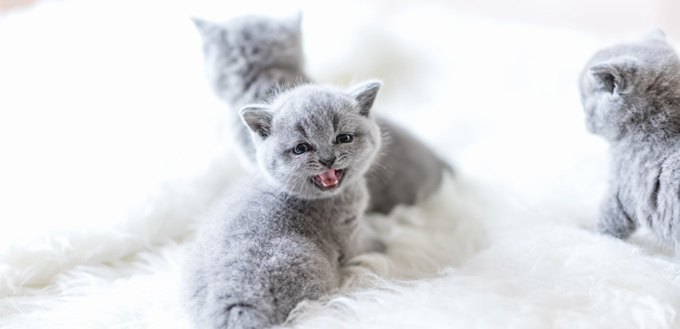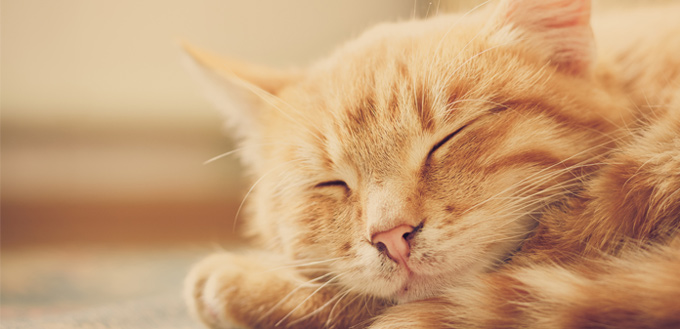Cats come in all different sizes: from thin cats to stocky cats, and little cats to big cats, and everything in between. However, just like a child, cats have different needs at various stages of their development. It is, therefore, critical to know how long cats grow for, as well as having an understanding regarding their various stages of growth and what this means in terms of their nutritional requirements and other needs. Read on to discover everything you need to know.
How Fast Do Kittens Grow?
Unfortunately, it is impossible to answer this generically because it does depend on the breed of your kitten. After all, if you have a Maine Coon kitten, it is going to grow at a different rate than a Bengal kitten would. However, you should easily be able to get your hands on a growth chart for your specific breed of a kitten. You can then compare your kitten’s measurements with the chart to determine whether your kitten is growing at the normal rate, or a bit faster or slower than usual. You will need to take your cat’s weight, as well as length and height measurements. To measure your kitten’s length, you need to go from nose to tail. To measure your kitten’s height, you need to go from paw to shoulder.

We can take a look at the growth of Maine and Bengal kittens to give you a better understanding regarding how breeds differ. A fully-grown Bengal Kitten will weigh between ten and 22 pounds, while their measurements will be up to 11 inches in height and between 13 and 16 inches in length. On the other hand, a fully-grown Maine Kitten will weigh up to 25 pounds, while their measurements will be between eight and 16 inches in height and up to 48 inches in length.
If your cat’s nutritional requirements aren’t met, this can result in slow growth or your cat may stop growing altogether. Too little zinc, iron, potassium, sodium, and magnesium can all retard growth. Too much calcium can result in slower-growing and denser bones. This highlights the importance of purchasing high-quality food for your cat.
Related Post: Best Wet Cat Food
When Do Cats Stop Growing and Reach Their Final Size?
Although it depends on the breed, most cat breeders agree that kittens reach their full size sometime between eight and 16 months. Despite this, there isn’t any scientific evidence we can refer to for the purpose of supporting this claim. Actually, this is a question that can be handled in many different ways. If you speak to a vet about your cat’s growth, it is likely that they will refer to the cat cycle/life stages. Rather than basing your cat’s growth on aspects like weight, height, and length, they will consider when your kitten is likely to reach the next vital milestone in their life. Some examples include: when your cat is eating independently and fully weaned, when she has developed a complete set of adult teeth, when she can make kittens, and when your cat is able to achieve full range of hearing and vision.
The life cycles that veterinarians refer to are generally the following:
| Life stage | Age |
| Kitten | Birth to six months |
| Junior | Seven to 24 months |
| Prime | Three to six years |
| Mature | Seven to ten years |
| Senior | 11 to 14 years |
| Geriatric | 15+ years |
Kittens Have a Steep Growth Curve
You have probably seen the tons of kitten videos online, which gives the impression that cats stay young forever. In fact, the opposite is the case. Newborn cats do not stay small for very long because they have a steep growth curve. This is especially the case for their first nine months. Throughout this time, the size of your kitten’s body and her bones will grow exponentially. After this, your cat will reach sexual maturity, which means further growth, albeit not as drastic as the initial nine months. Your cat may fatten up or fill out during this period. Again, the breed of your cat will play a big role when it comes to this.

Cat / Adult Growth Comparison
We often compare animals to humans so we can get a better understanding of their age and growth. When a cat reaches one-years-old, it is unlikely that they are going to grow much more. Your cat may keep filling out during the second year of their life, but her nutritional requirements are stabilizing and bones are set. In terms of comparing this to a human, we can say this is the equivalent to a 21-year-old person. Once a cat turns one-years-old, though, every year after this is the equivalent to four human years. With that in mind, a 20-year-old cat is like a human that is 101-years-old. Cat health and age does not necessarily align with that of a human, but it can help you to get a better understanding.
Feeding Your Growing Cat
Growing cats have higher nutritional and caloric requirements, yet they also have smaller stomachs. To foster regular meals, free feeding is a convenient approach, especially for kittens that are slow growing or underweight, however, this can result in obesity. Neutered cats, particularly, can be more prone to this. This highlights why it is vital to measure consistent amounts of food when feeding your kitten. Most vets will recommend feeding your cat three or four times per day, giving them around ¾ cup of pet food. This is not a hard rule, though, so do listen to your vet’s recommendation. Once your cat reaches six-months-old, this is a good time to switch to twice daily feedings.
Related Post: Best Kitten Foods for Your Cat
Hopefully, you now have a better understanding regarding how long cats grow for, as well as the different factors that impact their growth and the cat life cycle. As you can see, your cat’s growth will largely depend on its breed, so it is worth doing more research into the breed of your pet. Nevertheless, most cats will stop growing around one-years-old so long as their nutritional needs are being met.






